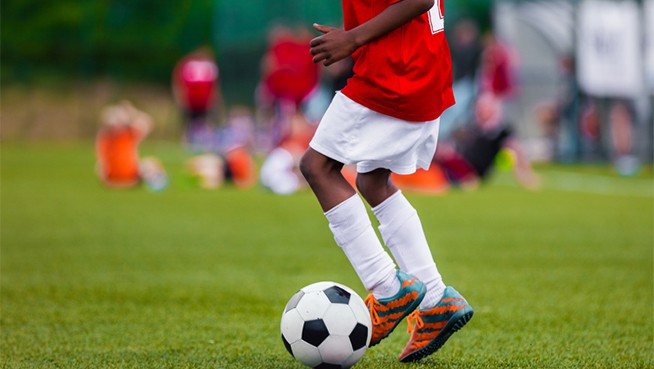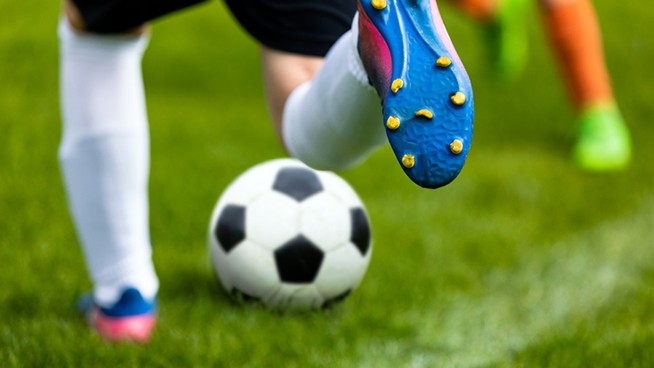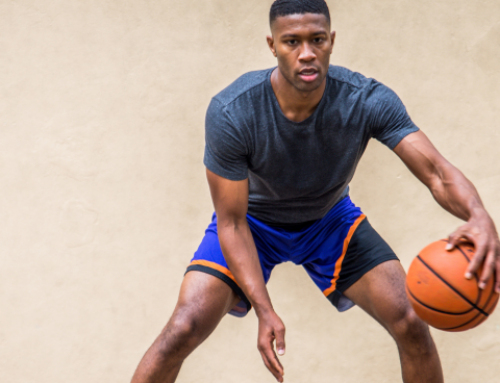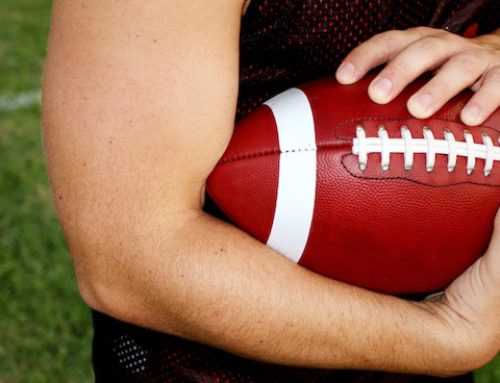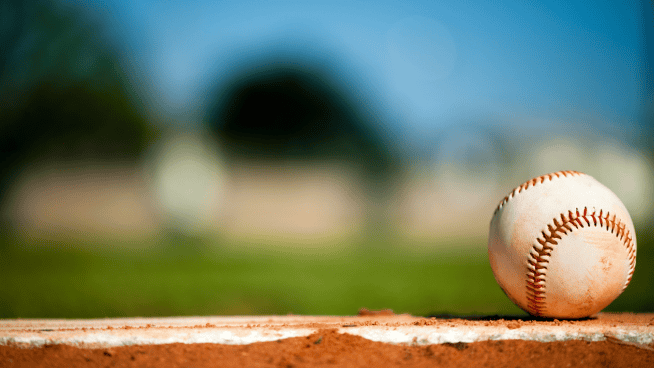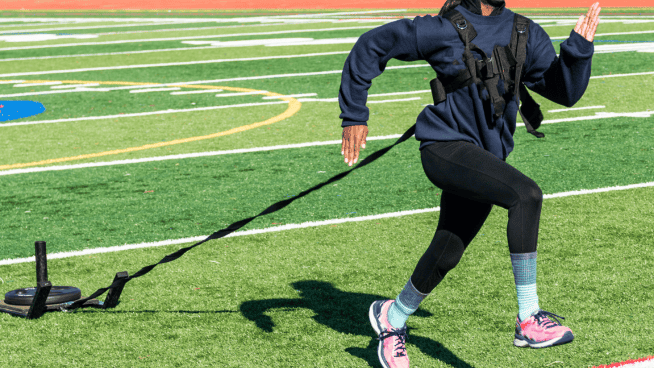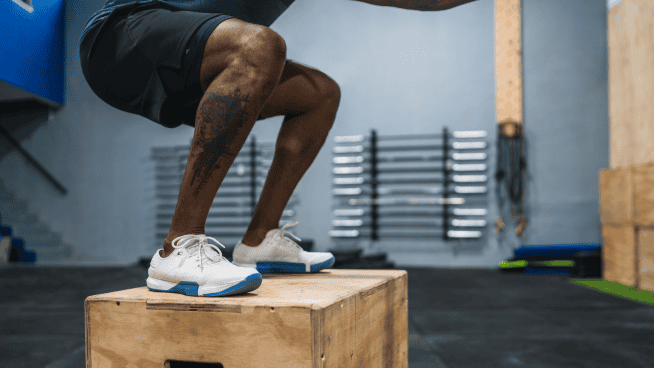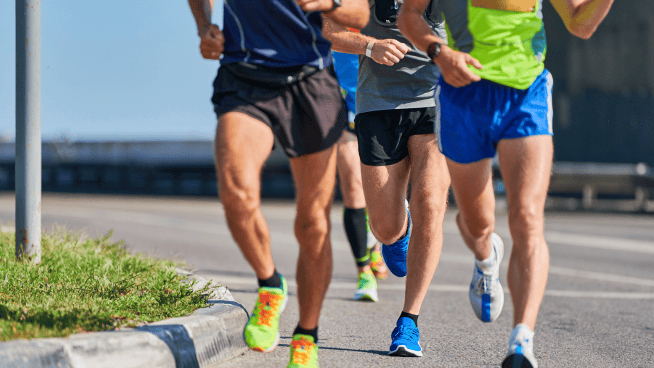Improve Your Basketball Shot by Analyzing Your Fundamentals
Infomercial gadgets offering to help basketball players improve their shooting abound. However, quick fixes that only address specific components of a player’s standstill shooting form do not carry over into games. A player’s shot success is a direct result of the energy produced by his or her lower body.
Basketball is a game of physics, especially when it comes to shooting. Every force has a counter force, and every action has a reaction. So the more force you put into the ground, the more efficient and accurate your shot will be. If your lower body fails you, you will begin throwing the ball rather than precisely shooting it—or flawed technique will cause you to miss baskets.
Most shots during games are taken off of violent movements, cuts or off the dribbling motion for a pull-up shot. This makes accurate shooting even more challenging.
To perfect your shot, you should analyze your technique and identify areas that can be improved, so you have an efficient transfer of energy from the lower body, through the core to the upper body and to the ball.
Below is a list of common problems to consider and how they affect your shot.
Level of athleticism
Many athletes have poor single-leg stability and single-leg balance. This leads to lack of consistency when stepping into full speed shots. To counter this, perform single-leg exercises.
Lowering Squat Mechanics
- Lower squat mechanics with the ball in shooting pocket: As a player begins to drop his hips, does the ball move towards the open air in front of the player’s body?
- Where energy is initiated: The best shooters push their butts back first, and their weight stays in the middle of their feet.
- Ball movement from the shooting pocket during the lowering squat: If the arms drop below the hips, the force is tough to control at top speed.
Triple Extension
- Equal force in both legs: If loading with ball in the shooting pocket is not symmetrical, there will be compensation. Things such as twisting in the air and pulling one shoulder back affect consistency.
- Range of motion during energy transfer: Combining two forces, triple extension and dipping the ball in motion, results in hitching the shot.
- Straight hips and feet: Twisting the lower body results in compensation higher in the motion; therefore, keeping the hips and feet straight causes less compensation.
Torso Control
- Keeping the shoulders forward: More athletic players produce energy with lower back extension, leading to a flatter arc on the shot and a lack of consistency.
- The amount of aerial low-back extension: Extreme low-back extension leads to throwing the ball instead of a fluid one-handed release controlled by the shooting hand.
- Torso torque to compensate for lack of triple extension: Younger players often “wind up” instead of creating force with their legs.
Upper Body Lever Control
- Amount of horizontal motion instead of vertical motion: Dipping or dropping the ball leads to low consistency of ball flight.
- Dominant arm in control: Off-handed force creates a two-force situation and low consistency off of movement shots.
- Both arms should create nothing but positive force towards the rim: If the non-dominant hand is creating any negative force, shot consistency will be low.
These concepts are a mix of performance training and skill training. That is why we have coined the term “Hybrid Training” at the IMG Basketball Academy. We are carrying over weight room and performance factors, and analyzing them on the court. Based on our observations, we have created “hybrid drills” to address areas of concern. For example, we will instruct a player to do three Stand-Still Squats with the ball in the shooting pocket before going into his or her full motion. This drill is designed to force proper lower-body squatting technique and energy control.
RECOMMENDED FOR YOU
MOST POPULAR
Improve Your Basketball Shot by Analyzing Your Fundamentals
Infomercial gadgets offering to help basketball players improve their shooting abound. However, quick fixes that only address specific components of a player’s standstill shooting form do not carry over into games. A player’s shot success is a direct result of the energy produced by his or her lower body.
Basketball is a game of physics, especially when it comes to shooting. Every force has a counter force, and every action has a reaction. So the more force you put into the ground, the more efficient and accurate your shot will be. If your lower body fails you, you will begin throwing the ball rather than precisely shooting it—or flawed technique will cause you to miss baskets.
Most shots during games are taken off of violent movements, cuts or off the dribbling motion for a pull-up shot. This makes accurate shooting even more challenging.
To perfect your shot, you should analyze your technique and identify areas that can be improved, so you have an efficient transfer of energy from the lower body, through the core to the upper body and to the ball.
Below is a list of common problems to consider and how they affect your shot.
Level of athleticism
Many athletes have poor single-leg stability and single-leg balance. This leads to lack of consistency when stepping into full speed shots. To counter this, perform single-leg exercises.
Lowering Squat Mechanics
- Lower squat mechanics with the ball in shooting pocket: As a player begins to drop his hips, does the ball move towards the open air in front of the player’s body?
- Where energy is initiated: The best shooters push their butts back first, and their weight stays in the middle of their feet.
- Ball movement from the shooting pocket during the lowering squat: If the arms drop below the hips, the force is tough to control at top speed.
Triple Extension
- Equal force in both legs: If loading with ball in the shooting pocket is not symmetrical, there will be compensation. Things such as twisting in the air and pulling one shoulder back affect consistency.
- Range of motion during energy transfer: Combining two forces, triple extension and dipping the ball in motion, results in hitching the shot.
- Straight hips and feet: Twisting the lower body results in compensation higher in the motion; therefore, keeping the hips and feet straight causes less compensation.
Torso Control
- Keeping the shoulders forward: More athletic players produce energy with lower back extension, leading to a flatter arc on the shot and a lack of consistency.
- The amount of aerial low-back extension: Extreme low-back extension leads to throwing the ball instead of a fluid one-handed release controlled by the shooting hand.
- Torso torque to compensate for lack of triple extension: Younger players often “wind up” instead of creating force with their legs.
Upper Body Lever Control
- Amount of horizontal motion instead of vertical motion: Dipping or dropping the ball leads to low consistency of ball flight.
- Dominant arm in control: Off-handed force creates a two-force situation and low consistency off of movement shots.
- Both arms should create nothing but positive force towards the rim: If the non-dominant hand is creating any negative force, shot consistency will be low.
These concepts are a mix of performance training and skill training. That is why we have coined the term “Hybrid Training” at the IMG Basketball Academy. We are carrying over weight room and performance factors, and analyzing them on the court. Based on our observations, we have created “hybrid drills” to address areas of concern. For example, we will instruct a player to do three Stand-Still Squats with the ball in the shooting pocket before going into his or her full motion. This drill is designed to force proper lower-body squatting technique and energy control.

